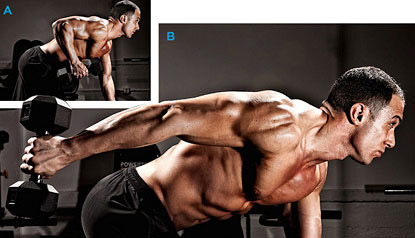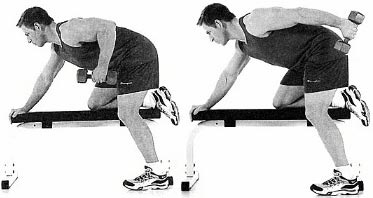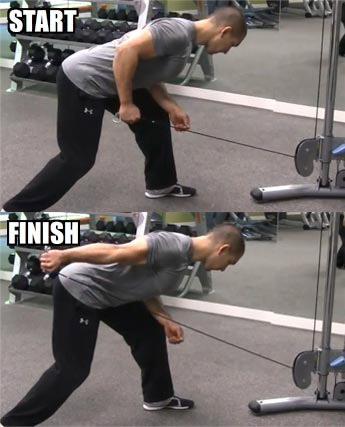WHY DUMBBELL TRICEP KICKBACKS ARE NOT A GOOD TRICEP EXERCISE

You’ve tried dips, close grip bench, maybe even diamond push ups. But what about tricep kickbacks to build arm mass?
When it all comes down to it, training your triceps for optimal size and strength is a fairly straightforward process.
The majority of your gains will come automatically as a result of your heavy pressing movements for your chest and shoulders, and you can then squeeze out an additional 10-20% of growth by including a basic tricep isolation exercise or two.
There are a virtually endless number of different variations you could choose from, and in most cases, the difference in effectiveness will be fairly marginal.
My standard suggestion for most people is to go with a basic tricep pushdown using a rope or straight bar attachment, along with an overhead extension performed one arm at a time with dumbbells to work the triceps long head. However, this is just one way to go about it.
There is one particular tricep extension movement that I definitely don’t recommend including however, and that is the dumbbell tricep kickback.

This is an extremely common exercise you’ll see being performed at the gym, and quite frankly, it’s just not very effective.
Sure, it will certainly provide you with some tricep stimulation, but given all of the other exercises you could utilize in its place, there’s just no point in bothering.
The primary reason why I’d suggest ditching dumbbell tricep kickbacks from your routine is pretty simple: they’re terrible when it comes to placing consistent tension on the triceps throughout the range of motion.
In the starting position when the weight is simply hanging by your side, your triceps are basically totally inactive, and even as you extend up to around halfway, you still won’t feel very much tension at all.
This is due to the direction that gravity is pulling the weight in relation to the positioning of your arm and the path the dumbbell has to travel in.
It’s really only when you get to the very top of the movement that the triceps kick into gear, and even then, you’ll probably find that the exercise just generally feels awkward and unnatural to perform.
Again, it’s not that they’re totally useless, but they’re just not a wise choice given all of the available options.
If you do still want to include a tricep kickback movement in your training plan, a much better alternative is to perform them using a cable rather than a dumbbell.
With the tricep cable kickback variation, the force of the resistance will now be pulling your arm forward rather than straight up and down, and this will result in constant tension on your triceps from the very bottom of the movement all the way to the top.
The way I recommend executing these is pretty simple…
Proper Tricep Cable Kickback Form

1) Place the cable as low as you can on the machine and grab the pully without any attachments at all.
2) Take a big step back and put your opposite foot forward.
3) Position your upper arm parallel to the floor or slightly above.
4) Under strict control, extend your elbow back until your triceps are fully contracted. Return to the starting position and repeat.
For added stimulation, you can experiment by starting off with your hand in a neutral position, and as you reach the fully contracted position, pronate your hand by twisting it inward so that your palm is facing away from your body.
The key to this exercise (and to all tricep extension movements) is control. Make sure to select a weight that you can perform smooth, deliberate reps with and where you can always control the negative portion at all times. Not only will this result in better tricep stimulation, but it will protect your elbows from injury as well.
If you found this article helpful, make sure to sign up for your FREE custom fitness plan below...




